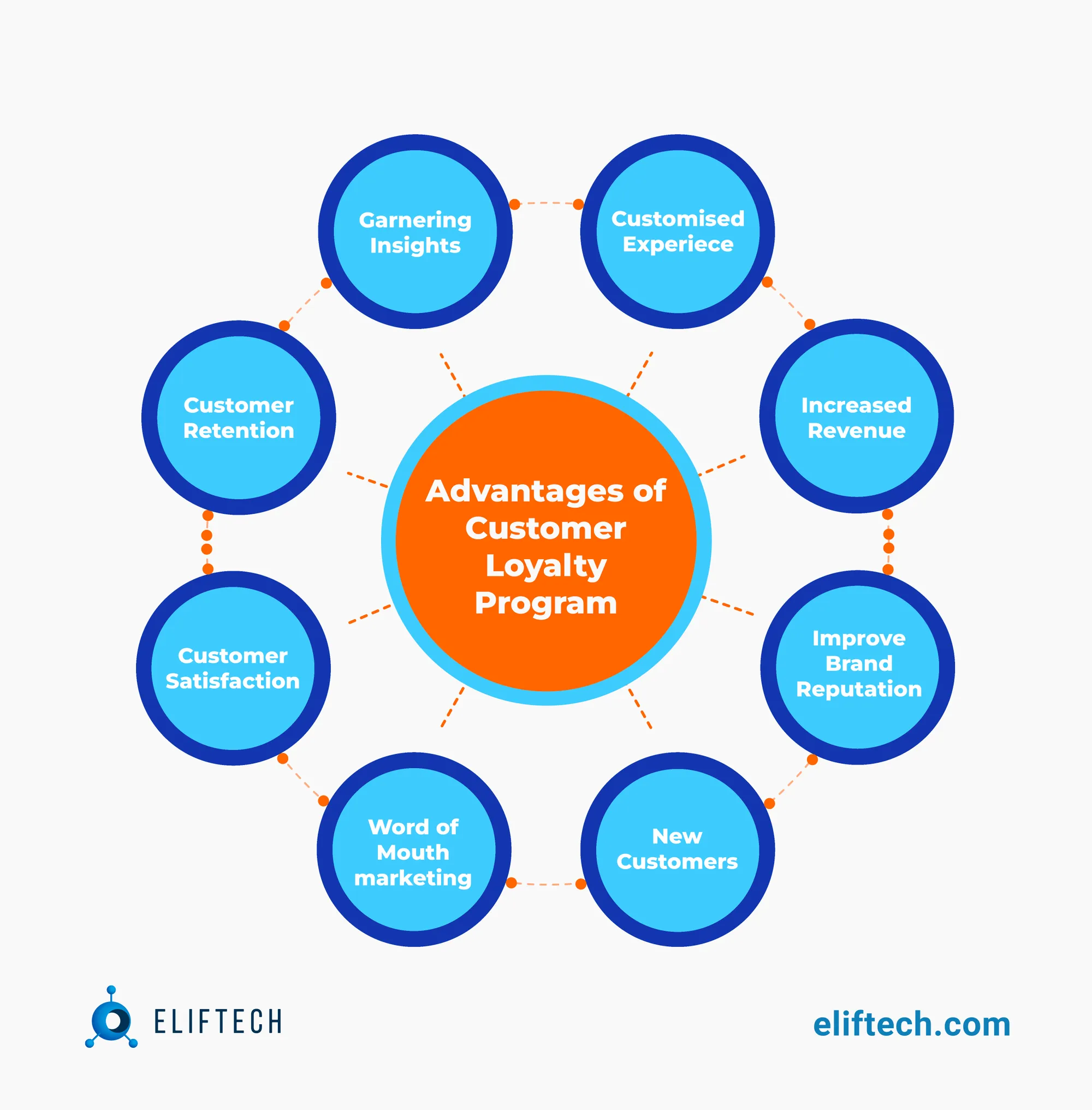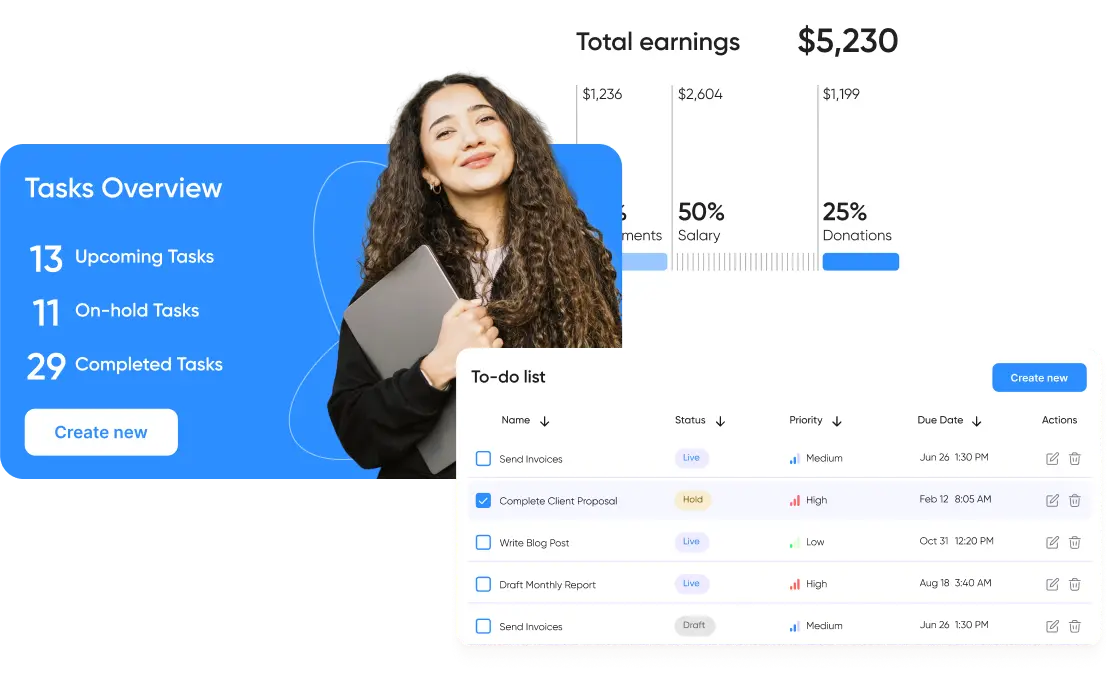Mobile Wallet Loyalty Program: Building Trust and Loyalty with eWallet Customers
Mobile phones have become our companions in the modern world, facilitating the revolution of payments and managing finances. Yotpo's study showed that loyalty programs significantly increase customer loyalty. What does it mean for business? A mobile wallet loyalty program is not an optional bonus but a tool every business should be equipped with to win the race for long-term buyer relations.
In this article, we will look into how businesses can leverage personalized rewards and experiences to win the hearts and wallets of the digital age customers.
How eWallet Apps Can Earn Customer Trust with Mobile Wallet Loyalty Program
Earning and maintaining customer trust is crucial for the success of eWallet apps. One effective strategy that has emerged is the integration of mobile wallet loyalty programs. By leveraging personalized rewards and incentives, eWallet apps can create a sense of value and loyalty among their users.
How can wallet apps foster stronger relationships with their customers? We will delve into the various benefits of these programs and help you succeed in customer loyalty through personalized in-app reward programs.
How Important is eWallet Personalization?
In mobile wallets, personalization means tailoring user experiences based on preferences, needs, and typical behavior patterns. It can be achieved through:
- data analytics
- user insights
To say that the impact of personalization is great will be an underestimation. If the user feels that their mobile wallet app understands their preferences and covers specific needs, it promotes a sense of connection, hence loyalty. Personalized recommendations are useful and well-accepted by the customer, driving engagement and satisfaction rates.
Moreover, personalization streamlines the user journey since they see relevant information upfront and reduce time wasted on efforts to find the desired services. It guarantees a seamless experience and enhances the convenience of the app.
5 Benefits of Personalized In-app Rewards

The advantages of personalized in-app rewards for mobile wallets serve both businesses and customers. They include:
- Increased engagement: With personalized rewards, customers engage with the brand more. For example, coffee shops offer customers a free drink of choice on their birthdays. In that way, they create a memorable experience and encourage people to visit the app more often.
- Loyalty: The more rewards the customer gets, the more sense of exclusivity develops. Retail shops practice such personalization by offering discounts created based on previous purchases, incentivizing buyers to come back more.
- Sales and revenue drive: It's a popular practice among e-commerce apps when they offer discounts and recommendations on complementary products and encourage customers to make extra purchases at the time, driving overall revenue.
- Data-driven insights: Businesses can adjust their business strategies by analyzing the data collected by apps. A fitness app, for example, collects data on user workouts, and based on that, the company can suggest fitness plans and subscriptions that better meet customers' behavior.
- Targeted marketing opportunities: Marketing campaigns become even more precise when based on data. An airplane app can offer frequent fliers special deals on the most popular destinations creating a better traveling experience.
Challenges and Considerations
Providing your customers with tailored offers and better experiences comes with challenges for you as a business owner. You find yourself navigating the transformative landscape of personalization. From delicate data security issues to optimizing your business infrastructure and redistributing resources, all aspects need guidance. Here are some considerations you can start looking into to make this journey more predictable:
- Balance of automation and human touch.
Personalization often envisages the implementation of automation. While this algorithm is cost and time-saving for businesses, it might not be perceived the same by the user. So, the blend between automatic messages and human interaction should still be preserved.
- Customer consent.
While some customers appreciate personalized offers and notifications and like to communicate with the brands frequently, others might be reluctant to do so. Hence, it is important to be transparent about the data collection. The study shows that 69% of respondents have more trust in a brand if it follows transparent policies about data usage.
- Resource allocation.
Continuous implementation, maintenance, and support of personalization strategies require skilled staff. So, when launching such initiatives, businesses should plan for the future and allocate internal resources or partner with specialists who will ensure the smooth running of the process.
- Data privacy and security.
Whenever a business collects personal data, the corresponding regulations and security protocols should be in place. Obtaining explicit consent from the customer is the best recommendation for businesses that want to use data to the full extent.
The Role of eWallet Apps in Customer Loyalty Programs
By integrating personalized rewards into digital and mobile wallet platforms, businesses unlock many benefits and boost customer experience. To start with, the need for physical coupons and cards disappears. They also make rewards, and other offers more valuable since they become data-driven and relevant. Finally, digital and mobile wallets give businesses tools for tracking customer behaviors in real time. Based on that, it's safe to say that the mobile wallet loyalty program transforms and becomes more profitable for businesses and convenient for the customer.
Loyalty programs in digital wallet apps
A loyal wallet can personalize discounts and promotions by analyzing a user's purchase history. Starbucks implemented a mobile wallet loyalty program that allowed customers to pay, earn rewards, and get customized offers. It gained popularity among users in the US and was used by more than 30 million people. The success of Starbucks' digital wallet and loyalty program was in the fact that they encouraged customers to make small but frequent purchases. Paying with the points earned instead of cash or credit card motivated customers to return more. Here are some common types of customer loyalty programs in digital wallet apps:
- Points-based: The customer gets points on purchases and can redeem them for discounts, rewards, or even free products. Such programs are used in Sephora and Starbucks.
- Tiered programs: The customers are grouped based on their spending habits. The higher the tier, the more benefits open up. An example of this program is Delta SkyMiles. The flier receives bonuses like priority boarding, free drinks, and waived fees with each tier.
- Cashback programs: A percentage of the purchase amount is received as cashback and later used for future shopping on the platform. Samsung Pay offers such awards for purchases from qualifying merchants.
- Gamified programs: Loyalty programs can engage customers if gamified elements like badges or medals are added.
How to Design Personalized In-App Reward Programs?
Following the latest trends in loyalty programs is not the main knowledge you need to design a perfect in-app reward program for your business. But having a vision of what you want to achieve and what your brand offers to the user is key. So, careful planning and analyzing your status quo will be the first step. As for more tips on how to create a loyalty app for your business, read on:
Identify customer preferences and behavior through analytics.
Leverage analytical tools to see how the user interacts with your app. What are the purchase patterns? Which products are usually browsed? Your promotional strategies will be based on this data. Pay attention to finding vulnerabilities in the app and getting as much feedback from users as possible.
Create relevant and targeted reward offerings.
It's important to create relevant reward offerings that resonate with your customers. Consider adding the following when designing targeted reward offerings:
- Customer segmentation (demographics, engagement levels, purchasing behavior).
- Gamification
- Surveys and feedback
Use gamification techniques to increase user engagement.
Since a points-based loyalty program is widespread, it does not make your business stand out. However, adding extra elements to it can be a game-changer. Starbucks introduces stars for users to collect and exchange points, and Nike has badges for completing workouts. Think of the possible symbols associated with the brand or resonating with your target audience that can be incorporated into the loyalty program to boost engagement levels.
How to Implement a Mobile Wallet Loyalty Program to Your Wallet?
Step 1: Set clear objectives.
While your program might cover many goals, it is important to define them. Do you want to focus on customer retention, increase repeat purchases, or enhance engagement? Clear objectives give you and your tech team the right direction.
Step 2: Choose the right technology.
Digital wallet technology is a powerful tool that you need to select carefully. If you want to find the best choice for the existing eWallet, the ElifTech team has the expertise to guide you and help you make an informed decision.
Step 3: Define the loyalty program structure.
Decide on the mechanism of earning and withdrawing points. Will it be based on purchases, referrals, or other specific actions in your eWallet? When planning the structure, consider adding machine learning algorithms to create the right level of personalization.
Step 4: Integrate with user accounts.
Your eWallet already has user data, and it is crucial to leverage it when designing a new loyalty program. In fact, it can contribute to its personalization. To use the data, you must integrate the program with user accounts to allow tracking points and redeeming rewards.
Step 5: Promote your loyalty program.
Start a marketing campaign to promote the program and invite users to participate. Use in-app notifications, social media, and other available channels to incentivize sign-ups.
Step 6: Monitor performance.
Decide on the key metrics you want to track, like redemption rates, customer lifetime value, engagement, and the program's impact on revenue. Use these insights, along with the analytics on customer behaviors and preferences, to adjust your program.
Step 7: Provide ongoing support.
Provide your customers with channels of communication regarding the loyalty program to get instant feedback. Regularly communicate with the participants and implement program improvements. In addition, ensure that a dedicated team covers your tech aspects. Bugs and glitches in the app damage customer satisfaction with the program, especially in the early stages of its implementation. At ElifTech, we provide our clients with continuous support, ensuring the product we create runs smoothly and seamlessly.
Unlock Customer Loyalty with Personalized In-App Rewards: Act Now!
The dynamic digital landscape gave rise to multiple technological tools, including loyalty program mobile wallets. Personalized in-app rewards in the eWallet loyalty apps build trust, provide excellent user experience, and give business managers valuable insights.
Investing in the development of a loyalty program is a timely decision in the current business environment. It requires strategic planning and execution, as well as the implementation of advanced personalization technologies, including ML and AI algorithms.
The more you read into the tech side of things, the more considerations arise. To navigate these complexities easily, you better delegate the technical aspects to a professional team. With over a decade of experience in fintech, eCommerce, healthcare, and other industries, ElifTech's team is equipped to enhance your eWallet with all the missing features.
Contact us to discuss your ideas!
Browse our case studies and get actionable insights to drive your success
See more
